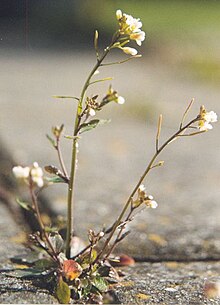 |
| Want to take a bite? Image credit: mutterkrause.com |
Remember our last post about how plants can actually hear caterpillars munching on their leaves? Well, if you have not read it, you can quickly get the gist by watching this video below. Unless you know the history, you will not enjoy the post. So, all new readers, do watch the video below and others can simply skip it and head straight to know what makes mustard is so tasty.
 |
| Thale cress (Arabidopsis thaliana), a weed, carries 52 genes that can produce bitter tasting flavours so that it can keep pests away. Image credit: Wikipedia. |
If you would like to know more about such wonderful discoveries from the world of science, subscribe to our blog and we will send you an email every time we post something new and interesting. Alternatively, you can follow us on social media such as Facebook, Twitter or Google Plus!
References:
Edger PP, Heidel-Fischer HM, Bekaert M, Rota J, Glöckner G, Platts AE, Heckel DG, Der JP, Wafula EK, Tang M, Hofberger JA, Smithson A, Hall JC, Blanchette M, Bureau TE, Wright SI, dePamphilis CW, Schranz ME, Barker MS, Conant GC, Wahlberg N, Vogel H, Pires JC, & Wheat CW (2015). The butterfly plant arms-race escalated by gene and genome duplications. Proceedings of the National Academy of Sciences of the United States of America PMID: 26100883
Ehrlich, P., & Raven, P. (1964). Butterflies and Plants: A Study in Coevolution Evolution, 18 (4) DOI: 10.2307/2406212

